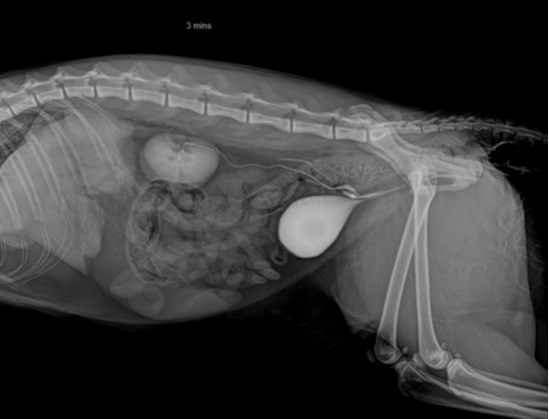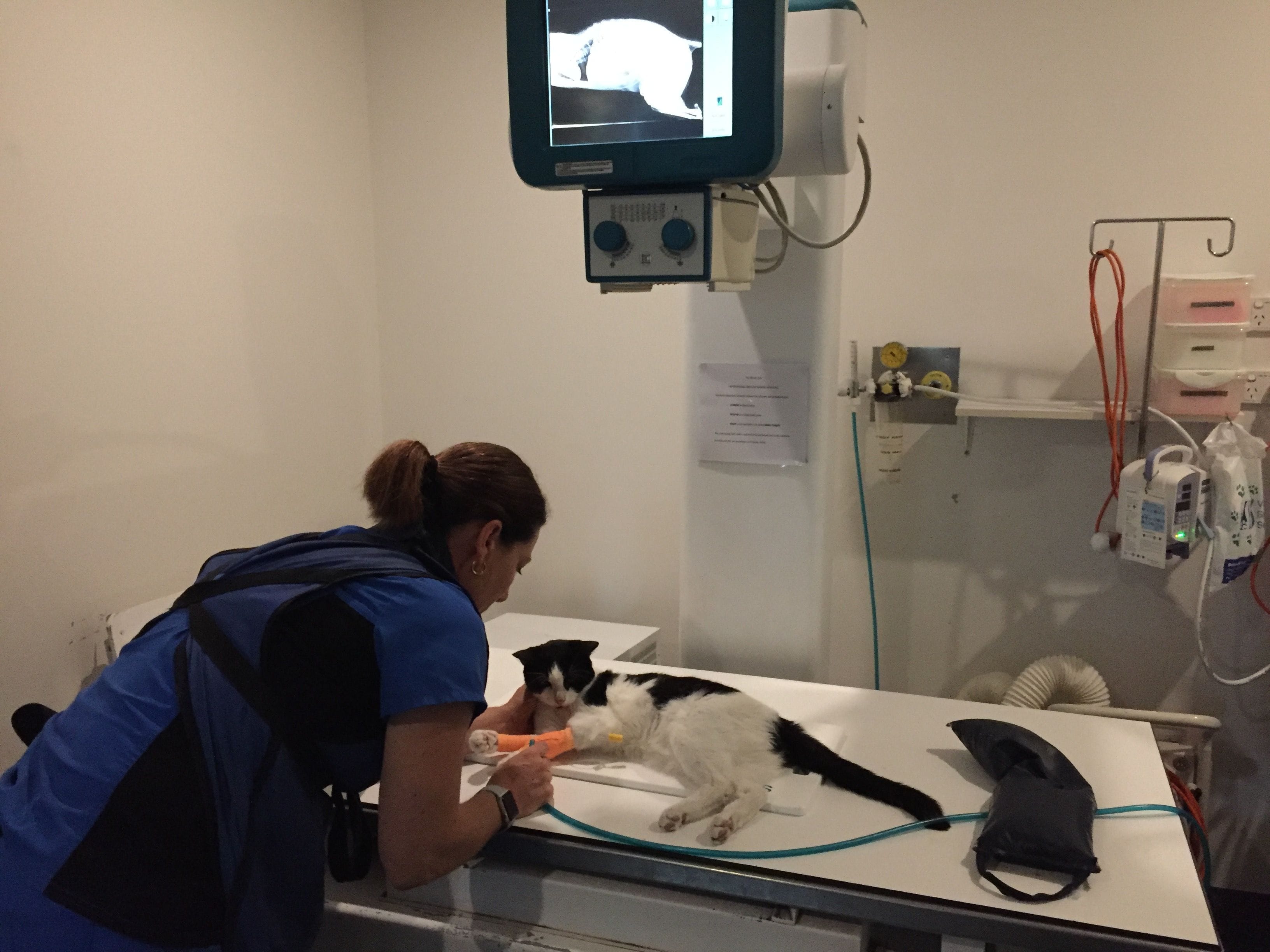Radiography (x-ray) allows evaluation for respiratory (e.g. lungs), gastrointestinal (e.g. foreign bodies) or urinary tract abnormalities (e.g. kidney or bladder stones). It is also used for evaluating bones.
Radiography is performed with the patient sedated or under anaesthesia as it is important for us to keep our staff protected from exposure to x-rays.
For cats with breathing problems, performing investigations such as radiography can cause their breathing effort to deteriorate if they become distressed. We sometimes need to perform investigations very slowly to ensure that they do not become too anxious.
We will contact you once your cat has had their radiography performed to discuss results, however this may be a few hours after admission.






